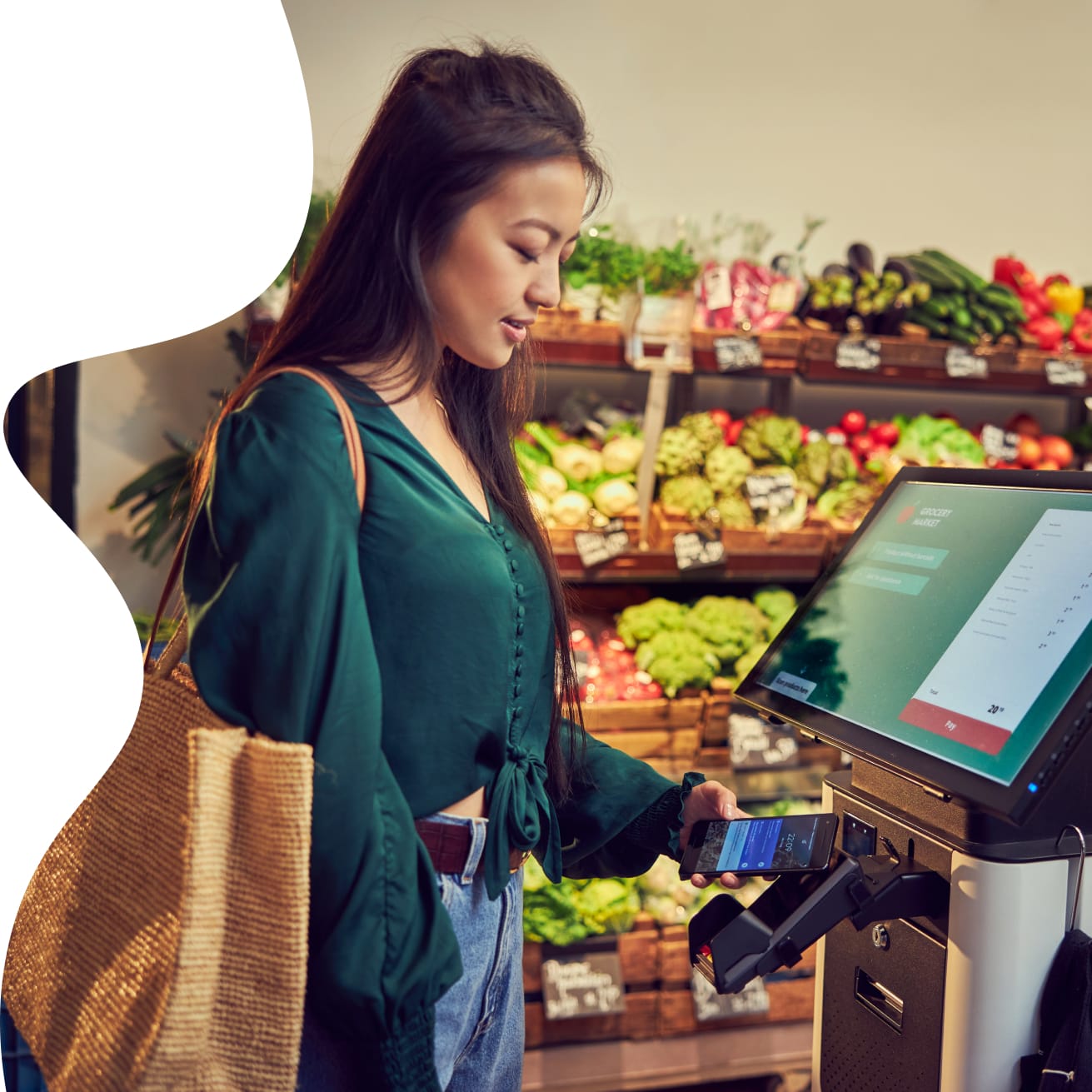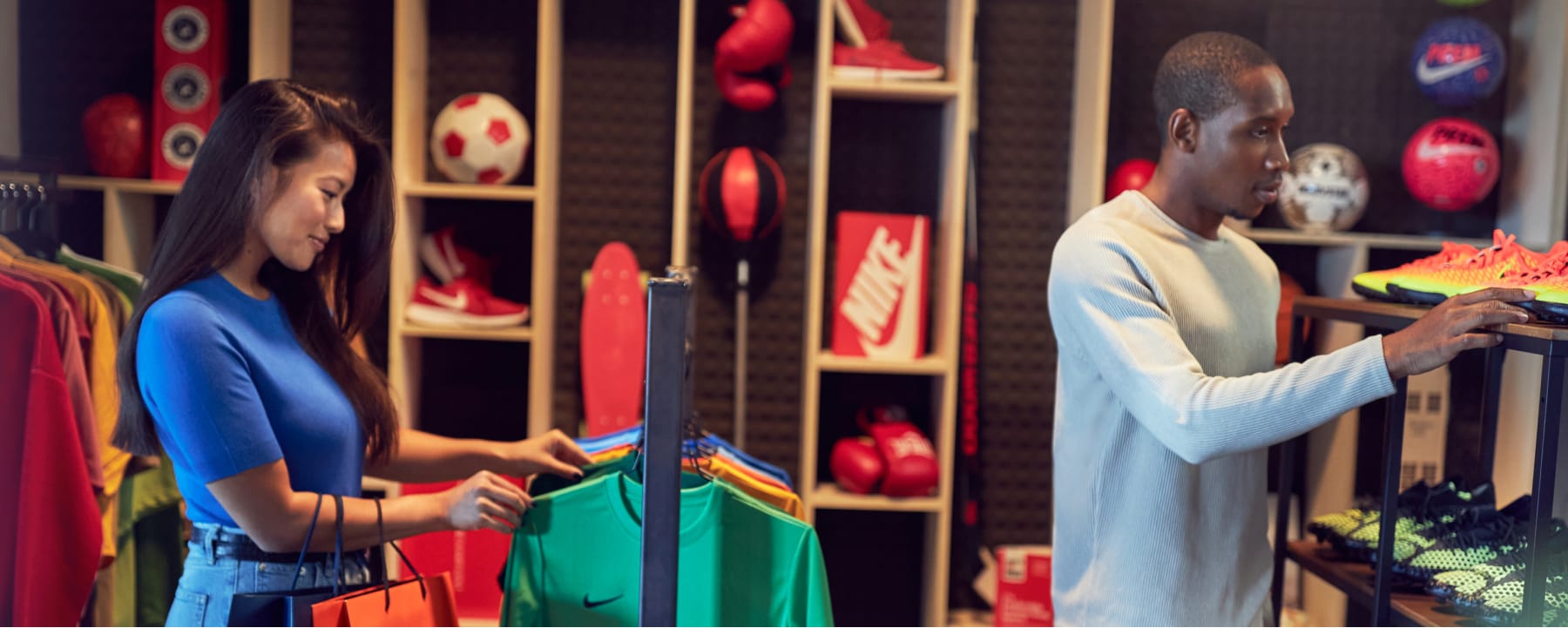Adyen Agility Report Singapore ~ Chapter One
Shifting sands Sales channels in flux

Over the centuries, pandemics have accelerated changes in human behavior. The Black Death dealt a heavy blow to the feudal system and raised labor wages. The Boston Smallpox Epidemic gave rise to the free press. And SARS propelled online shopping into the mainstream. The long-term impact of the coronavirus remains to be seen, but already it’s been a catalyst for change. And with change comes opportunity.
Initially, of course, it’s dealt a heavy blow to commerce. With shops shut, restaurants empty, and malls deserted, spending around the world plummeted. In Singapore, retail sales sank by 40% between January and April, as 44% of people brought fewer non-essential items. With tight restrictions placed on retail outlets, very few businesses have passed unscathed through this turbulent period. However, those with the ability to react fast have been more resilient.
A critical survival factor during the pandemic's peak was retailers’ ability to pivot to selling online. Almost half (49%) of all Singaporeans migrated to online channels during the pandemic, a number well above the global average of 33%.
For many retailers, however, ecommerce was an afterthought or an item halfway down an already long to-do list. And it’s amongst these businesses we’ve seen the worst casualties. But businesses with a strong online offering have fared much better, as you can see in the illustration below.
Online readiness vs impact of pandemic on retail sales
Increased resilience with unified commerce
The businesses that consistently perform the best are those that can combine their physical and digital worlds to create a fluid, channel-agnostic experience which prioritizes the customer. This is unified commerce. And our data has revealed it to be a critical success driver. It helped to stabilize sales during the pandemic by offsetting lost in-store transactions with an increase in ecommerce. And the more channels your shoppers use, the higher their value to you.
Data from the Adyen payments platform
Globally, 50%* of unified commerce retailers saw transactions remaining consistent during the pandemic.
*Analysis of anonymized data from Adyen’s global payment platform comparing unified commerce performance in Q1 2019 with Q1 2020.
Globally, in-store shoppers spent 40% more when they moved online during the pandemic.
To demonstrate the value of unified commerce, Cebr modelled what would happen to the economy if more retailers adopted the approach. Using the United Nations’ UNCTAD index to assess countries’ unified commerce readiness, the analysis found that a five-point increase on the index was associated with 2.6% better retail sector performance during the pandemic, accounting for lockdown stringency. This equates to a S$330 million improvement in retail turnover in Singapore. For F&B, a five-point increase in the unified commerce preparedness was associated with a seven-unit improvement during the pandemic, estimated at more than S$76 million.
The surge of ecommerce during peak pandemic periods has been well reported. And this trend was particularly apparent amongst tech-savvy Singaporeans. In line with this, many retailers have implemented shopping and payment processes, including one-click options, to streamline the online shopping experience. This robust infrastructure meant that the mass migration to online presented a largely positive experience for consumers, 54% of whom plan to shop online more in future, well above the global average of 36%.
However, a growing enthusiasm for ecommerce doesn’t lessen the demand for physical experiences. Close to three quarters of consumers across age groups said they’re looking forward to shopping in-store again. The key to success will lie in harnessing the best of both worlds to satisfy and enchant your customers. They should be able to enjoy the speed and convenience of ecommerce, coupled with the pleasure of visiting a beautifully presented store – which should not merely be a place to sell products. Stores are changing, they should be treated as vehicles for brand engagement and places where shoppers can seamlessly make purchases on physical or online channels.
Want to explore how unified commerce can help your business?
“The unified commerce vision that we have is part of BHG’s digital transformation path. One reason to embrace unified commerce is the way that businesses are leveraging data, which is key in any industry especially in retail. Having a unified commerce solution enables us to provide seamless shopping experience for consumers while giving us better visibility throughout the whole business.”
Jheeva Subramanian ~ Chief Financial Officer, BHG
% that shopped more online during the pandemic than they did previously
% that look forward to shopping for pleasure again
Global
33%
55%
Europe
30%
52%
US
36%
58%
APAC
36%
68%
Singapore
49%
72%
“Given the social distancing measures, many consumers have had to turn to online platforms to fulfill their daily needs. This was reflected among our user base as well. Regionally, we saw a nearly 30% growth in first-time cashless users for food delivery between February and March 2020. Between the January to April 2020 period, around 10% of our GrabPay user base were new to GrabPay (cashless) users. We expect this trend to persist post-pandemic as more become familiar with digital payment platforms and tools.”
Huey Tyng Ooi ~ Managing Director, Head of GrabPay
A look further afield: Online shoppers and in-store lovers
Perhaps because they changed their shopping behavior more than any other nation during the pandemic, but Singaporeans can’t wait to get back to physical stores.
Half of Singaporeans (49%) said they shopped online more during the pandemic, compared to the global average of 41%. Only Brazil had a higher percentage in this regard (50%), while closer to home, this figure stood at 42% in Hong Kong and 27% in Australia.
Almost three quarters (72%) look forward to shopping in-store for pleasure again, level with Hong Kong, and above all other countries surveyed. Globally, 55% of consumers look forward to shopping in store again, while 63% of Australians, 58% of Americans and 48% of Brits feel this way.
Singaporeans are advocates of the physical store, with 59% preferring to shop in person rather than online – rising to 71% among the over-55s. This compares with the global average of 58%, 72% for Australia, 66% for Hong Kong, and 50% for the UK.
% of consumers that are going to shop online more than they did before the pandemic
18 - 34 yrs
64%
35 - 54 yrs
54%
55+ yrs
40%
49% will be eating out at their favorite restaurants now that they are open again.
62% used takeaway apps more than they did previously.
18 - 34 yrs
52%
74%
35 - 54 yrs
48%
58%
55+
46%
51%


